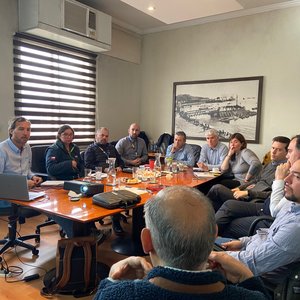Across America each day, nearly 5,650 animal food manufacturing facilities produce millions of tons of livestock, poultry and aquaculture feed and pet food, providing animals with safe and adequate nutrition while supporting an abundant U.S. food supply. Now, new research from the American Feed Industry Association (AFIA) shows that these facilities drive economic growth, not only across our national economy but also in the counties and states where they are located.
“We’ve always said that animal food manufacturing is at the intersection of plant and animal agriculture, uniting crop farmers and animal producers, but now we see that intersection is actually the main artery in town, driving economic value throughout rural and urban communities,” said AFIA president and CEO Constance Cullman. “Despite the stresses put on the animal food industry over the past few years, from the COVID-19 pandemic to supply chain hurdles to animal disease to high inflation, it is clear that it is stronger than ever before and growing.”
The economic contribution study, conducted by Decision Innovation Solutions (DIS), an economic research and analysis firm, estimates that in 2023, the total animal food industry, including indirect and induced effects, will generate $267.1 billion in sales. This figure includes an estimated $98.4 billion in value-added revenue (i.e., labor income, taxes on production and imports, and other property income). The industry will employ roughly 760,000 full- and part-time and contract employees, paying out $55 billion in salaries and employee benefits before year-end. At the local, state and national levels, the industry will file $18.5 billion in taxes in 2023.
The 83-page report showed that the top five states for feed and pet food sales this year will be California, with an estimated $19.5 billion; Missouri, with $18.6 billion; Texas, with $17.1 billion; Iowa, with $16.5 billion; and Kansas, with $16.2 billion. The top five congressional districts across all economic measures this year will be Kansas-02, Texas-13, Iowa-04, Nebraska-03 and Missouri-07, which are districts with high levels of livestock or poultry production and are home to many feed mills and pet food manufacturing facilities.
The states with the most feed mills included Texas (647), Iowa (376), Minnesota (347), Wisconsin (263) and Pennsylvania (258), whereas the states with the most pet food manufacturing facilities included Pennsylvania (59), Michigan (33), Wisconsin (28), Nebraska (27) and Washington (26). Missouri employs the most animal food manufacturing employees with over 54,350, followed by California, Texas, Iowa and Pennsylvania.
The research also found that in addition to purchasing the farm-grown crops and other inputs needed to make feed and pet food, the industry generates economic activity up and down the supply chain by utilizing related services and industries including truck and rail transportation services, financial institutions, advertising and more.
The full report, along with state and congressional district fact sheets, is available on AFIA’s website at afia.org/economic-impact.













